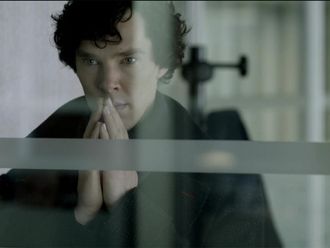
There are over 8,000 Android phone apps with the word “weather” in the title, and over 2,400 similar apps available for iPhone users. It’s a topic people around the world just love to discuss.
Click start to play today’s Word Search, where you can find various weather phenomena.
One of the phrases featured in today’s puzzle is parhelion, otherwise known as sun dog or mock sun. Often visible in cold countries, these ‘parhelia’ flank the sun within a 22-degree halo, and appear as subtle patches of light to the left and right of the sun. The phenomenon is caused because of the refraction of sunlight by ice crystals in the atmosphere. The ancient Greeks used to call it ‘sun dog’ because these bright spots seemingly followed the sun, just like a faithful pup.
Another phrase from today’s puzzle, rain shadow, can be found next to some of the world’s most famous mountain ranges. The term refers to a patch of land that has been forced to transform into a desert, because adjacent mountain ranges have blocked rainy weather and subsequently stopped the growth of plants. It’s a common sight for a mountain to have a wet weather system with snow and rain on one side, and a rain shadow on the other, where all precipitation is blocked.
The Tibetan Plateau for instance, is a rain shadow in Tibet, China, and India that experiences dry climate due to the massive Himalayas. And Death Valley, a desert region in California and Nevada, US, gets its dry, hot climate since it’s in the rain shadow of the Sierra Nevada mountain range.
Lastly, the word twilight, which appears in today’s puzzle, is often used interchangeably with dusk and is considered to be any time of day between daylight and darkness, but did you know there are three kinds of twilight?
Civil twilight occurs as soon as the sun dips below the horizon (six degrees below, to be precise) – there’s enough light to see, but at this point, you would usually turn on your car headlights if you are on the road. Nautical twilight occurs when it’s fairly dark outside and the sun has dipped 12 degrees below the horizon – it’s the point at which, sailors at sea are unable to distinguish between the sky and the ocean. Astronomical twilight occurs when all traces of sky glow vanish and the sun is 18 degrees below the horizon – the perfect time for astronomers to begin observing the stars.
Did you know about these phenomena? Play today’s Word Search and tell us at games@gulfnews.com.









